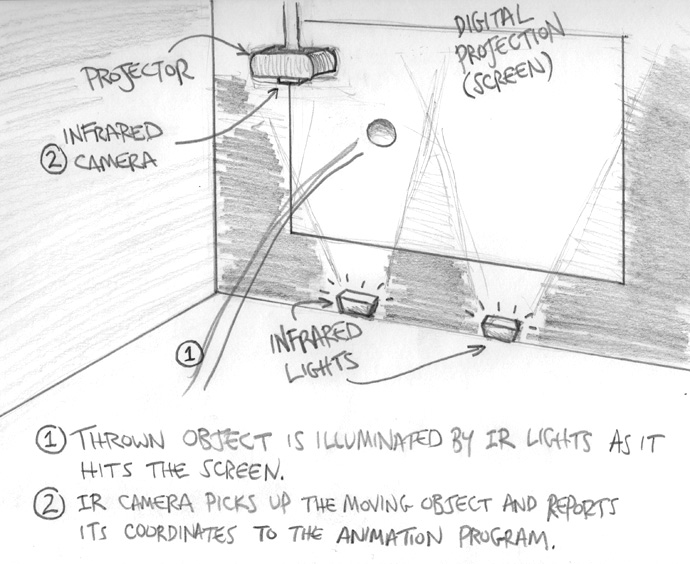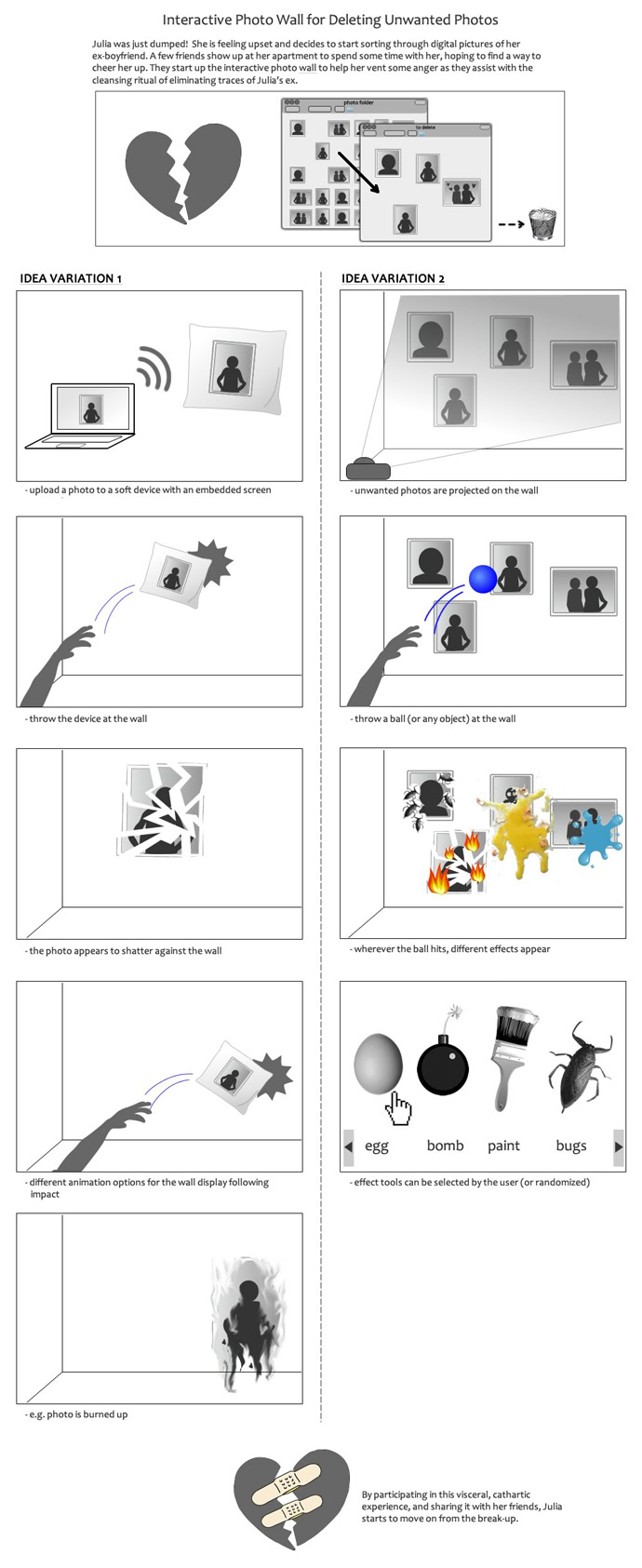[In case there was any doubt, I never actually dated Britney Spears.]
The HeartBreaker Interactive Wall was conceived of in the context of domestic rituals, specifically the rituals associated with the termination of romantic relationships. After coming up with a number of concepts that clumsily attempted to tackle the associated emotions head on, I shifted to a more lighthearted approach, which immediately felt more resonant and successful. After a break-up, people frequently go through a rite of "cleansing" themselves of their former significant other by disposing of artifacts of the relationship. People once had the option to burn, flush, crumple, tear up, or otherwise destroy photographs of their exes, but now that so many of our photographs only exist digitally, it's difficult to garner any satisfaction from disposing of them. Dragging an icon to the trash bin on a computer desktop just isn't the same as watching a picture go up in flames.
In order to make the ritual of purging such photographs a more cathartic experience, I developed the HeartBreaker Interactive Wall. In its initial deployment, the wall displays a photograph along with a menu of virtual objects that can be "thrown" at the pictured ex: paint, eggs, bombs, and rocks. Any physical object can be thrown at the wall, and the animation associated with the selected virtual object displays where the real object strikes the wall. [We used pillows and stuffed animals in the demo, but a lamp, spatula, or cell phone would work just as well.] A satisfying splat, crack, boom, or shattering noise is played upon impact, providing the user with the notion that they've somehow inflicted an imaginary bit of pain upon their ex. In subsequent revisions, I intend to feature some visual feedback that the photograph itself has been damaged or destroyed, as well as a system for moving the photo files on the user's hard drive (if they so choose.)
Although the interaction was designed as a mechanism to assist with the cleansing of an ex, there are certainly other applications that would deliver the same feelings of satisfying catharsis. Boss been nagging you? Grab his photo from LinkedIn and lob eggs at his face. Your downstairs neighbor won't turn down the stereo? Stealthily snap a pic when he comes out to retrieve his mail and blast away with some virtual bombs. [My classmates and instructors were having a little too much fun hurling whatever was handy at the wall.]
The interface makes use of an infrared camera and lighting, which circumvents the problems associated with object detection in front projection systems. Because infrared light falls outside of the spectrum of visible wavelengths, the infrared camera doesn't "see" the digital projection on the wall, and instead recognizes objects which are illuminated by the infrared lights as they reach the wall. I used tbeta computer vision software for object recognition, which is able to communicate information about detected objects via TUIO. I coded the interaction in Processing, which receives the TUIO data, and responds with the various animations and sounds.
[This was a collaborative project with classmate Shuya April He, who created the animations.]


No comments.